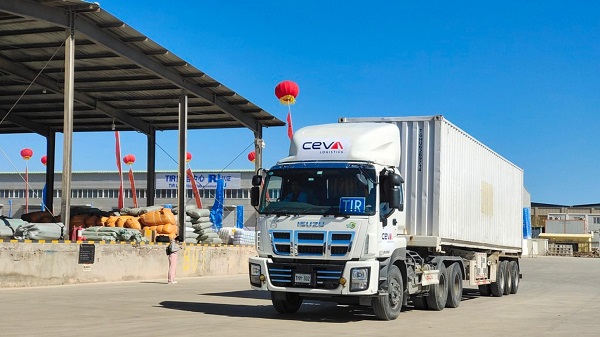
China’s TIR transport market experienced remarkable growth in 2024, marking a turning point in its development. With record-breaking numbers, the rise of new operations, and the establishment of logistics hubs, 2025 promises even greater expansion and innovation.
China’s TIR operations surged in 2024, with an expanded scope covering cross-border e-commerce, cold chain products, and bulk freight.
These developments are strengthening China–Europe trade corridors, making pan-Asian cross-border transport more efficient, reliable and secure.
The numbers
With increased collaboration between public and private partners, the number of Chinese TIR operators and vehicles skyrocketed, growing by over 400% in 2024.
This growth was reflected in the number of TIR movements. TIR operations to and from China increased by 88%. Transport operators from eight countries, including China, conducted TIR operations to and from China in 2024.
Additionally, 35 border crossings and inland Chinese cities facilitated TIR operations. They supported more than 50 cross-border TIR routes, unlocking new destinations along China–Europe corridors.
The TIR hubs
In 2024, five IRU-accredited TIR logistics hubs opened in inland cities that are important for international trade: Kashgar, Urumqi, Zhengzhou, Shenyang and Chengdu.
These hubs are now key centres for expanding TIR routes, driving trade and strengthening international collaboration. They provide integrated services such as customs declarations, warehousing, and cargo handling, reducing processing times to as little as two hours.
By the end of 2024, the hubs had attracted 40 companies from the transport, freight forwarding and logistics sectors. They are currently operating over 20 TIR routes covering regions such as Central Asia, Pakistan, Afghanistan and the Caucasus, enabling efficient and secure trade.
The hubs also act as centres for international cooperation. They are advancing best practices and strengthening connections with multinational companies, industry leaders and associations across Eurasia.
The future
Reflecting on the achievements of 2024, IRU Director of TIR and Transit Tatiana Rey-Bellet described it as a pivotal year for China’s TIR transport, “2024 marked the 75th anniversary of the TIR system and a significant step forward in China’s journey towards scaled development of TIR, thanks to the joint efforts of IRU, our private sector partners and public authorities.”
“Looking ahead to 2025, IRU plans to build on this success by expanding TIR routes, promoting innovation, and increasing the application of TIR to multimodal transport, bonded cargo and transit operations,” she added.
Tatiana Rey-Bellet also highlighted that the launch of additional TIR logistics hubs in other cities would remain a priority, further boosting trade connectivity between China and its global partners.
The TIR system: What is it?
The United Nations-backed TIR system enables goods to be shipped from a country of origin to a country of destination in sealed load compartments that are controlled by customs via a multilateral, mutually recognised system.
TIR streamlines procedures at borders, easing the administrative burden for customs authorities and transport and logistics firms. It significantly reduces border waiting times, saving both time and costs.
Processing TIR at inland customs offices in China is especially beneficial for out of gauge goods, perishable food, dangerous goods, e-commerce, precision instruments and other goods with high requirements for transport safety and timeliness. /// nCa, 13 February 2025 (cross-post from IRU)